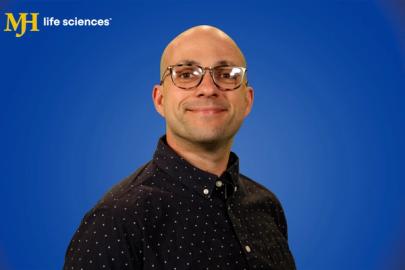- About Us
- Advertise / Support
- Editorial Board
- Contact Us
- CancerNetwork.com
- TargetedOnc.com
- OncLive.com
- OncNursingNews.com
- Terms & Conditions
- Privacy
- Do Not Sell My Information
- Washington My Health My Data
© 2025 MJH Life Sciences™ and CURE - Oncology & Cancer News for Patients & Caregivers. All rights reserved.
AYA Patients With Cancer, ‘In Between’ Kids and Adults, Face Unique Concerns

A nationally-published, award-winning journalist, Alex Biese joined the CURE team as an assistant managing editor in April 2023. Prior to that, Alex's work was published in outlets including the Chicago Sun-Times, MTV.com, USA TODAY and the Press of Atlantic City. Alex is a member of NLGJA: The Association of LGBTQ+ Journalists, and also performs at the Jersey Shore with the acoustic jam band Somewhat Relative.
Ann Graham of MIB Agents discussed some of the challenges adolescent and young adult patients deal with after cancer diagnoses.
Adolescent and young adult (AYA) patients with cancer, who find themselves between pediatric and adult patients, often face concerns and issues unique to their age group, as an expert explained to CURE®.
“There's not, in the majority of hospitals and institutions across the country, a space in hospitals for adolescents and young adults. There's often a children's hospital, a pediatric unit, and there's the adult unit, and they're in between,” said Ann Graham.
Graham is the executive director and founder of MIB Agents, a nonprofit organization dedicated to patients with osteosarcoma, a rare cancer which starts in the bones and typically affects younger patients.
After being diagnosed with osteosarcoma at the atypical age of 43, Graham was treated in the pediatric cancer center at Memorial Sloan Kettering Cancer Center in New York.
“I was treated in the pediatric cancer center, and I was surrounded by little ones. And there were also kids who were in the in-between space of young adult and were surrounded by fish tanks and cartoons and clowns and all these crazy things that we've graduated from. But for a kid who's maybe a senior in high school or a sophomore in college, this is a weird space, so that's a challenge,” she said.
Graham spoke with CURE® about some of the specific concerns of AYA patients.
Transcript:
You don't really think of cancer patients as having to have a test on Friday or go through midterms. And this is one of the challenges. They're in school, generally. And there's not, in the majority of hospitals and institutions across the country, a space in hospitals for adolescents and young adults. There's often a children's hospital, a pediatric unit, and there's the adult unit, and they're in between.
So, in my case, I was treated in the pediatric cancer center, and I was surrounded by little ones, and there were also kids who were in the in between space of young adult and were surrounded by fish tanks and cartoons and clowns and all these crazy things that we've graduated from. But for a kid who's maybe a senior in high school or a sophomore in college, this is a weird space, so that's a challenge.
And then they've also been taken out of [a] usually high-functioning, busy schedule. They're often athletes, or even if they're in choir or dance or something along those lines, they're now out of that. So they're completely isolated from the thing that they love doing. They're taken out of having to study, show up for tests. They don't even have to take out the trash anymore. So you're sort of picked up from your life, removed completely from it and put in a hospital situation where you are alone. You know, usually at the outset, there's a great swell of support that wanes as these sort of emotions do. The longer your treatment goes on, the less you see of your friends, so you you're really feeling isolated.
Transcript has been edited for clarity and conciseness.
For more news on cancer updates, research and education, don’t forget to subscribe to CURE®’s newsletters here.
Related Content:



